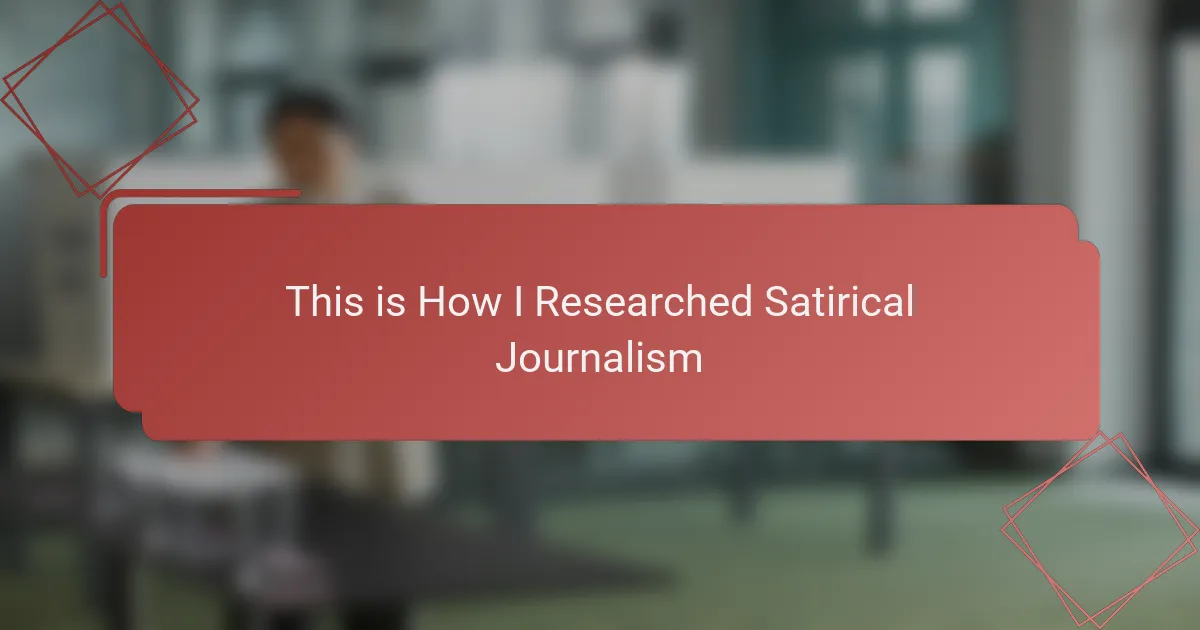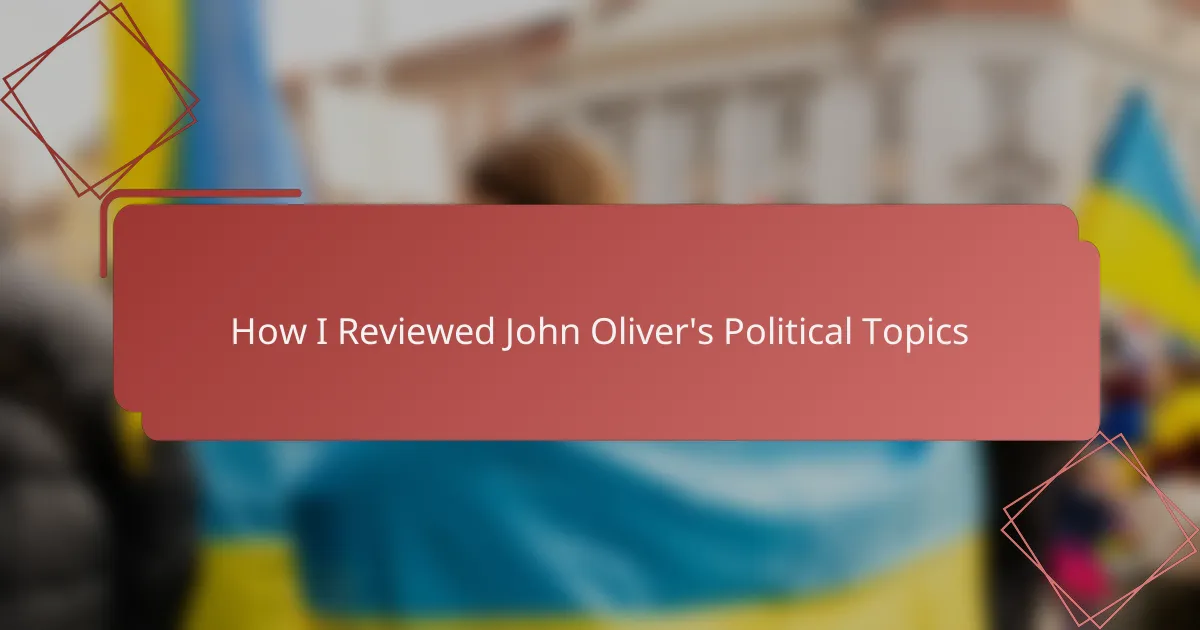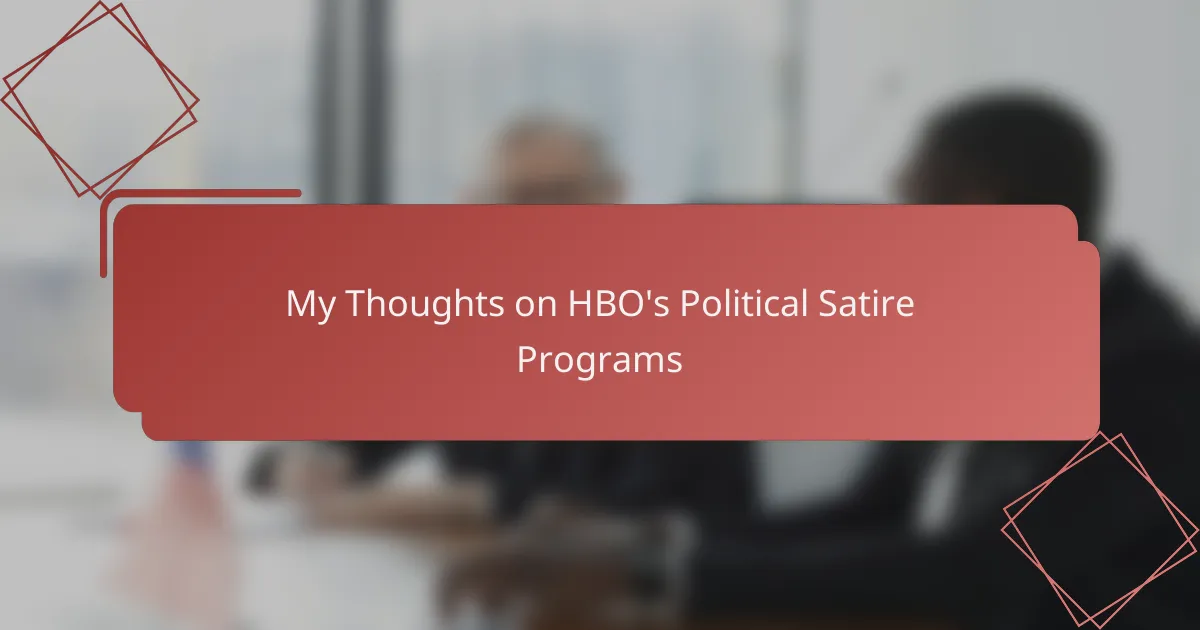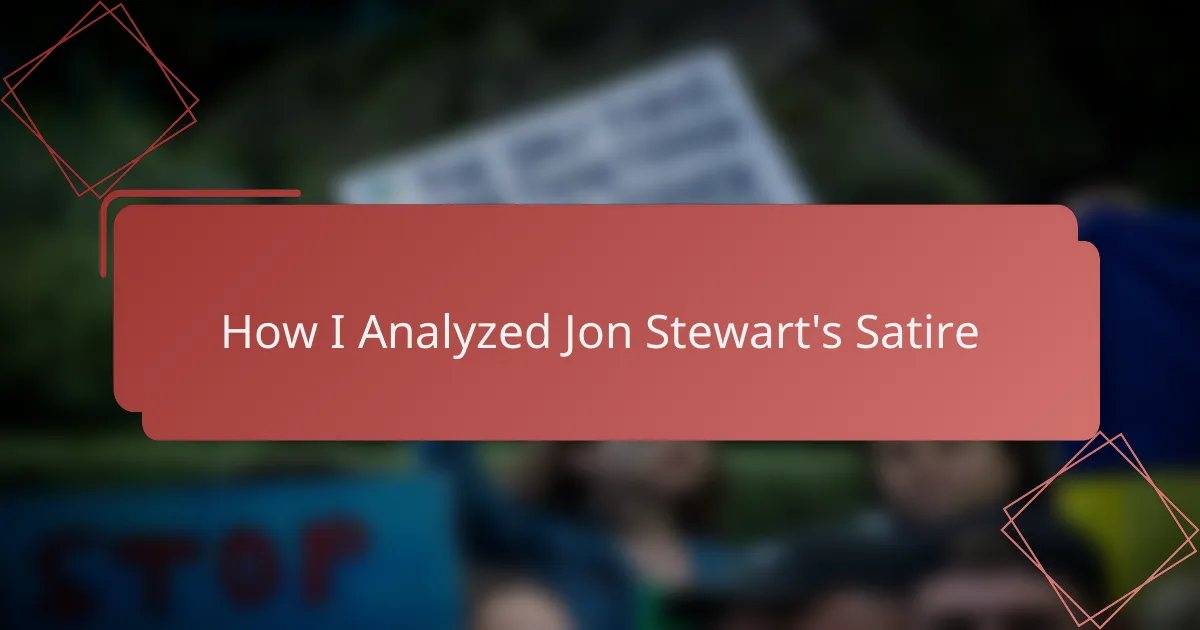Key takeaways
- Political satire serves as a powerful tool for critiquing authority and provoking critical reflection on societal norms.
- Various forms of satirical journalism, such as parody, visual satire, and faux editorials, deploy distinct techniques to engage audiences and reveal deeper truths.
- Analyzing satire involves recognizing its intricate use of irony, exaggeration, and context, which together create multi-layered meanings that resonate with viewers.
- Measuring the impact of satire requires a nuanced approach, considering both immediate reactions and the broader influence on public dialogue and thought over time.
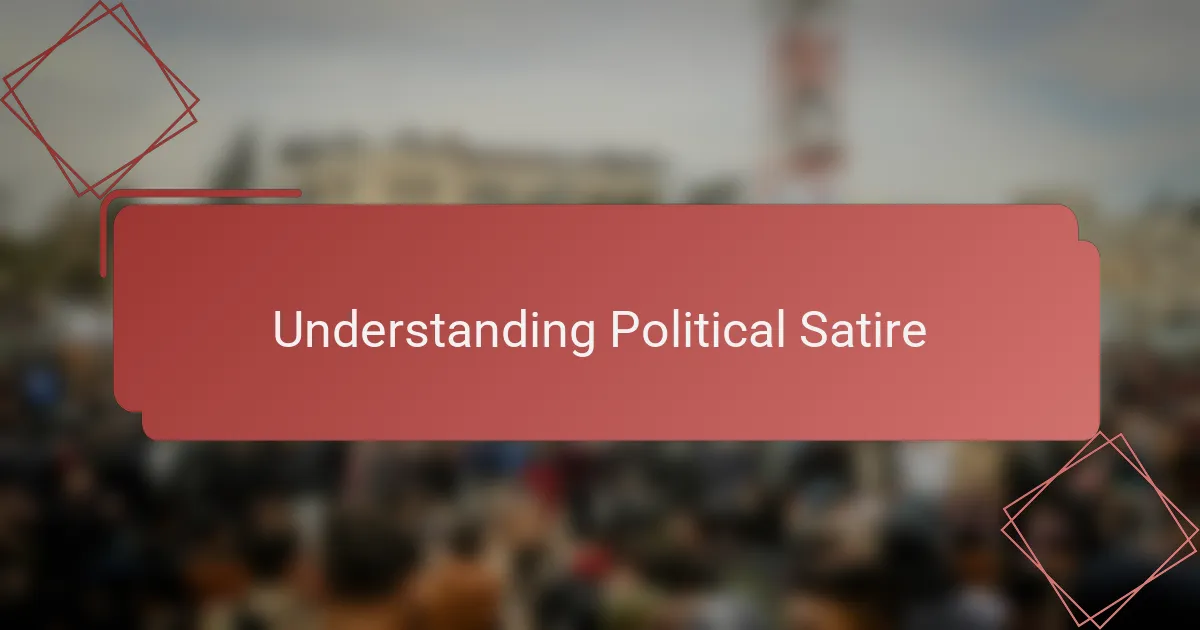
Understanding Political Satire
Political satire has always struck me as a powerful lens through which we can scrutinize authority and social norms. But what makes it truly compelling is its ability to blend humor with sharp critique, challenging us to think beyond the surface. Have you ever caught yourself laughing at a joke, only to realize there’s a deeper truth lurking beneath?
When I first delved into political satire, I noticed how writers use exaggeration and irony not just to entertain, but to provoke reflection and, sometimes, discomfort. It’s this mix of wit and seriousness that creates a unique space for dialogue—one that feels both approachable and intellectually stimulating.
Understanding political satire means recognizing that it’s more than just laughter; it’s a mirror held up to society’s contradictions and flaws. How often do we pause to question the status quo because of a clever punchline? For me, that moment of realization is the essence of why political satire matters so much.
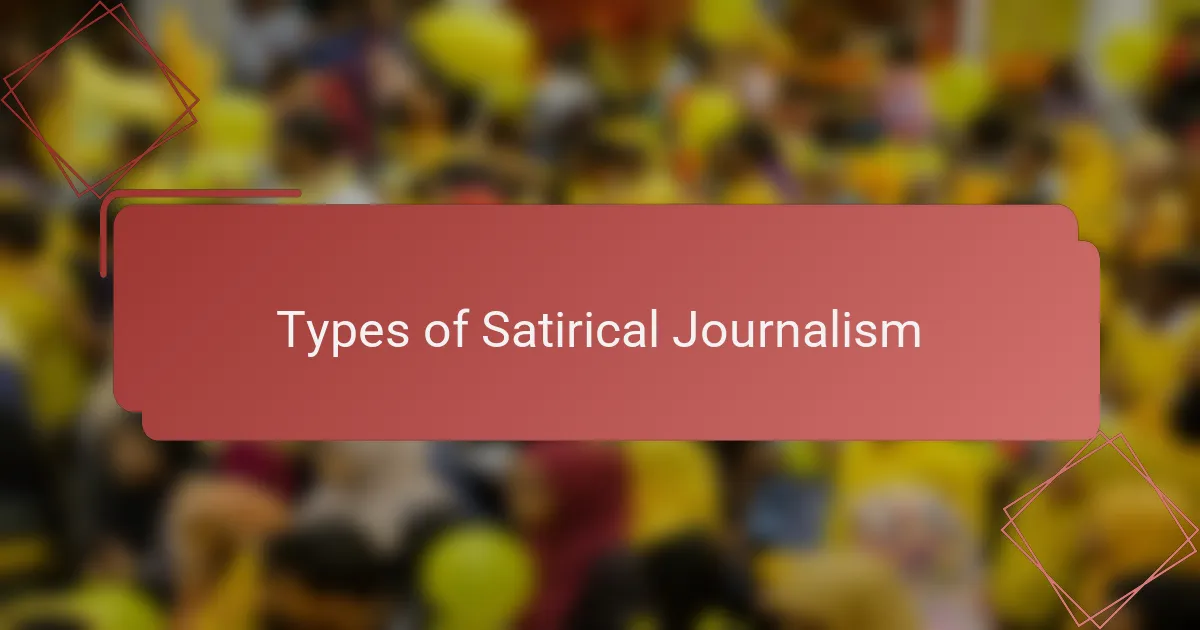
Types of Satirical Journalism
Satirical journalism comes in various flavors, each with its own way of cutting through the noise. From biting parody to the subtle mockumentary style, I found myself intrigued by how these formats shape the message. Have you noticed how a parody news article can make you laugh and then suddenly reconsider a political stance?
One type that captivated me was the faux editorial—where the writer pretends to hold an outrageous opinion to expose the flaws in actual arguments. It felt like watching a clever chess game, where every exaggerated claim was a strategic move revealing deeper societal issues. This approach made me realize satire isn’t just critique; it’s a form of storytelling that disarms and enlightens simultaneously.
Then there’s the visual satire, like political cartoons, which rely on images and minimal text to convey complex ideas instantly. I remember seeing a cartoon so sharply drawn that it lodged itself in my mind, making the critique unforgettable. It’s fascinating how these different types each find unique paths to get under our skin and make us pause.
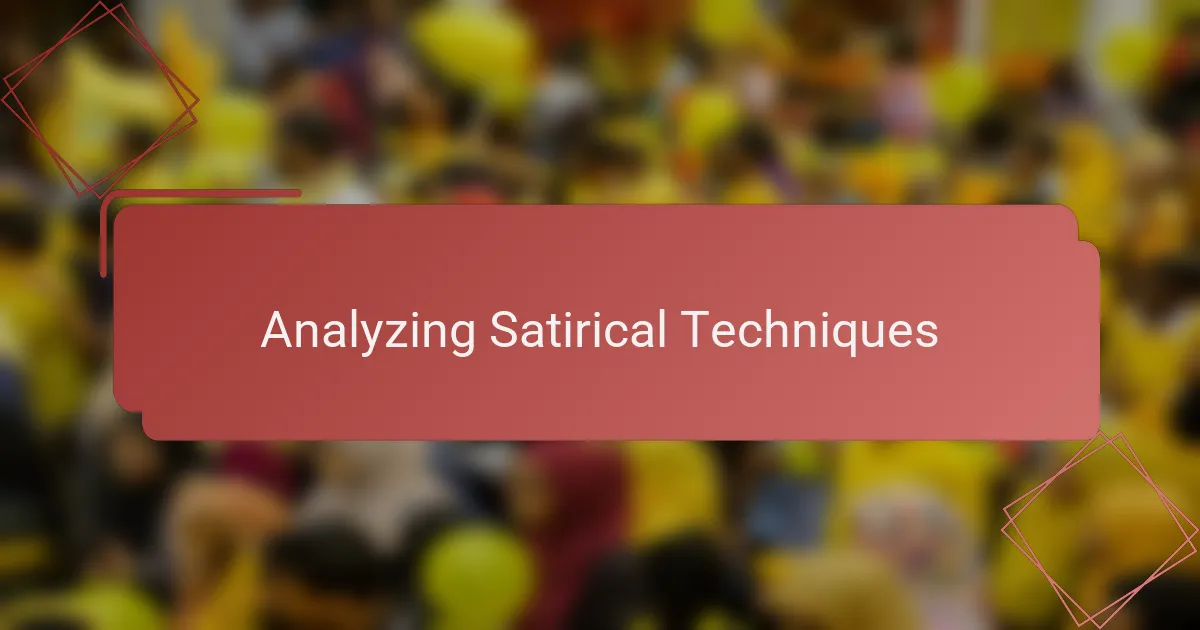
Analyzing Satirical Techniques
When I began analyzing satirical techniques, I was struck by how essential irony is to the whole process. It’s not just saying the opposite of what’s true but doing so in a way that makes the audience catch the contradiction themselves. Have you ever noticed how that moment of realization hits harder than a straightforward critique? For me, that layered meaning is where the magic happens.
Exaggeration also stood out during my research. Some satirists push details to absurd extremes, and it’s funny at first—but then you see how those extremes actually expose real problems in society. I remember reading a piece that seemed over-the-top, yet it perfectly highlighted the ridiculousness of a political argument. This technique, when done well, feels like holding up a funhouse mirror that distorts just enough to reveal uncomfortable truths.
Then there’s parody, which is deceptively simple but incredibly powerful. I found that mimicking the tone and style of traditional journalism allows satirists to slip critique into familiar formats. It’s like a secret handshake between writer and reader, inviting us to recognize the absurdity within the ordinary. When satire uses this technique, the humor becomes a Trojan horse for deeper reflection—don’t you think that’s a clever way to engage people?
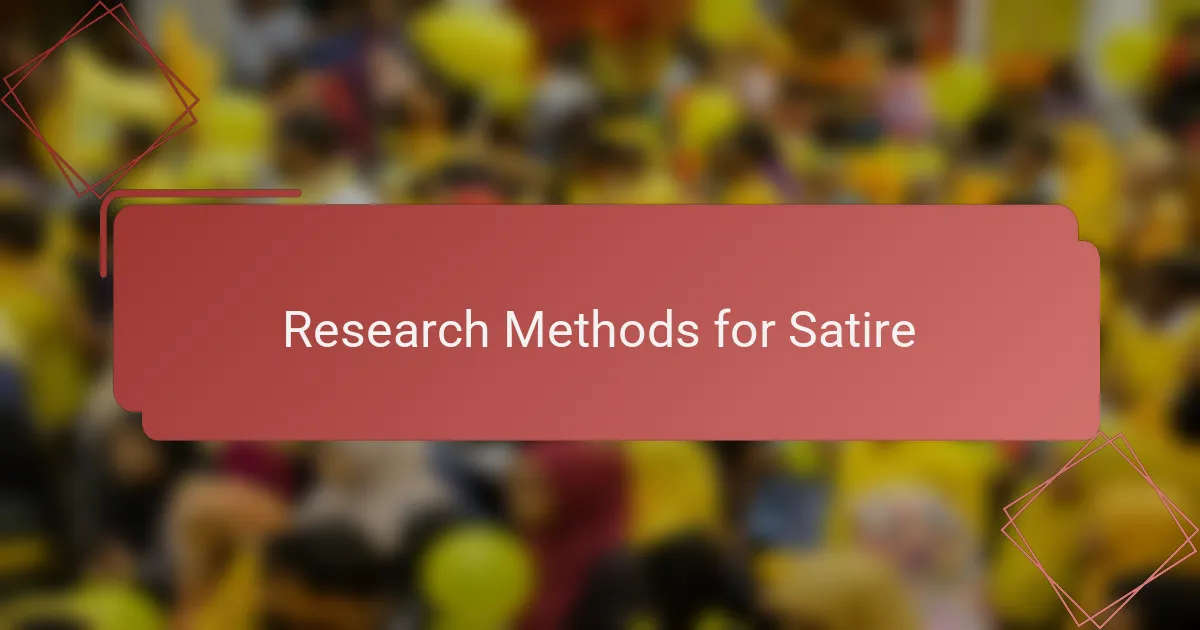
Research Methods for Satire
Digging into satire required me to combine close reading with a keen awareness of context. I often found myself cross-referencing historical events and political speeches to catch all the subtle nods and ironies embedded in the humor. Have you ever caught a satirical line that only made sense after a bit of digging? That little aha moment pulled me deeper into the layers beneath the jokes.
I also leaned heavily on comparative analysis—looking at how different satirists approached the same topic. This helped me see patterns in their methods and understand how tone, timing, and platform influenced the impact. Sometimes, a satirical piece’s effectiveness hinged less on what it said and more on how and where it was presented. That realization made me appreciate the craft behind the comedy even more.
Lastly, I can’t overlook the role of audience reception in my research. I paid close attention to comments, shares, and critiques to grasp how satire resonated—or clashed—with its viewers. It was fascinating to see how humor could unite some, while unsettling others, revealing the complex dance between creator intent and public interpretation. Doesn’t that make you wonder how much power satire really holds in shaping conversations?
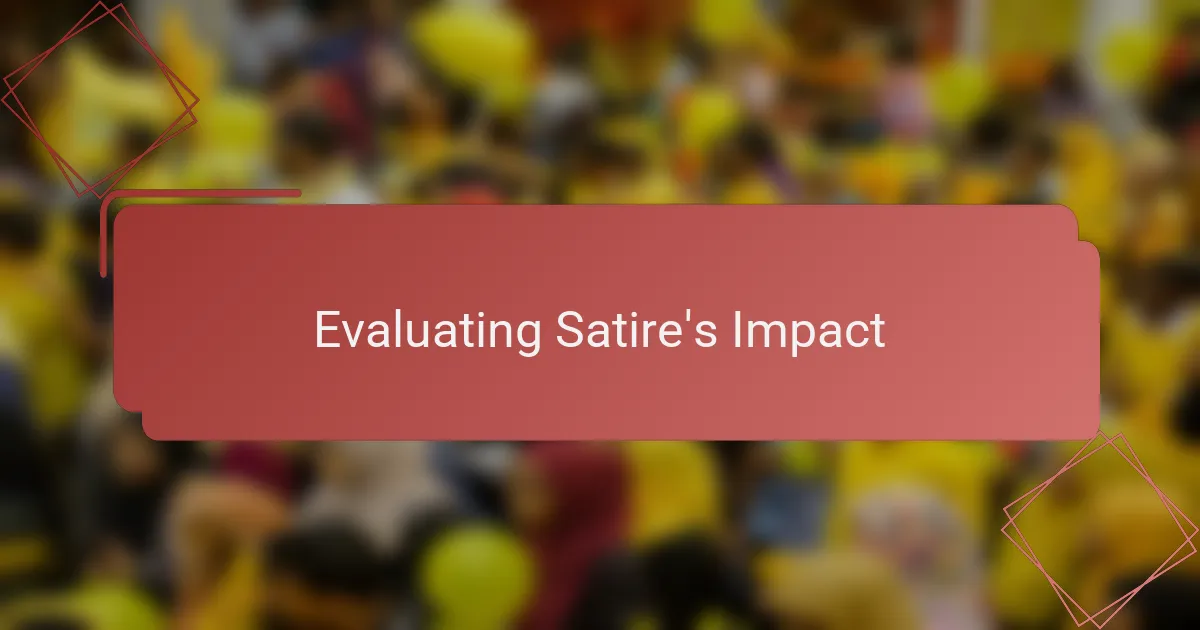
Evaluating Satire’s Impact
Evaluating satire’s impact felt like peeling back layers of a complex dialogue between creators and audiences. I noticed that sometimes a satirical piece would spark widespread debate, while other times it barely made a ripple—and that contrast made me question what truly drives a work’s influence. Is it the sharpness of the humor, the timeliness of the subject, or simply the mood of the moment?
One moment that sticks with me was tracking a satirical article that went viral overnight. Observing the mix of laughter, anger, and reflection in the comments showed me how satire can simultaneously entertain and provoke. It made me realize that impact isn’t just about changing minds immediately but about planting seeds of critical thought that grow over time.
I also grappled with measuring impact beyond online reactions. How do you capture the subtle shifts in people’s perceptions or the quiet conversations sparked by satire? This challenge reminded me that evaluating satire’s true reach requires patience and a willingness to read between the laughs.
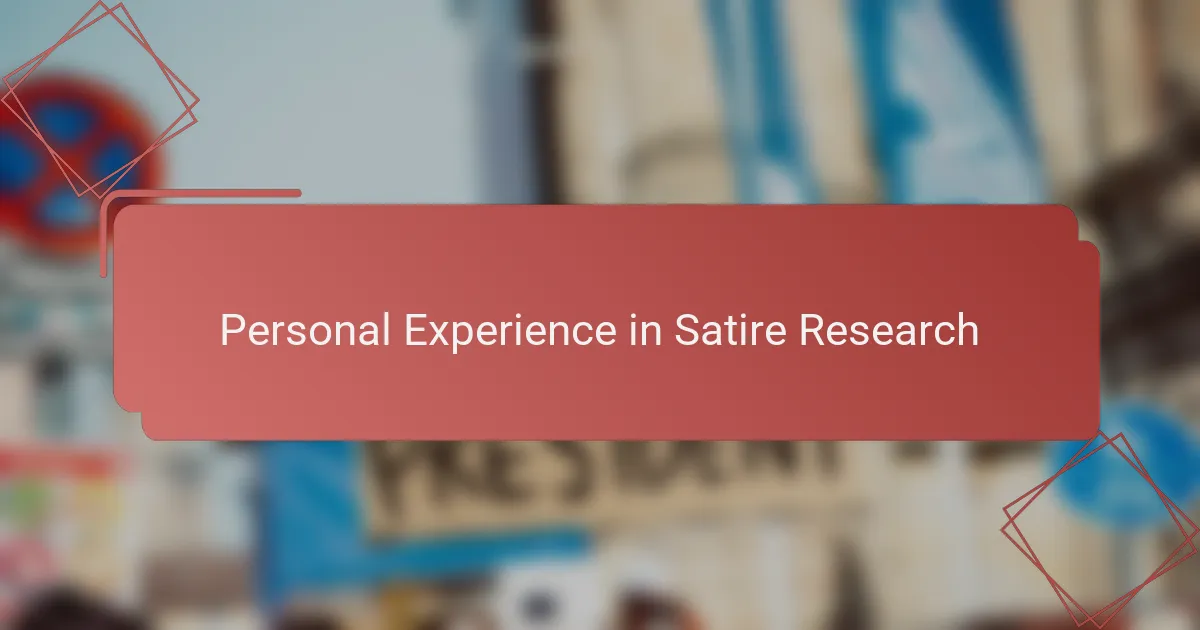
Personal Experience in Satire Research
Researching satirical journalism felt like embarking on a treasure hunt where every joke held a clue. I remember the thrill of uncovering hidden references that weren’t obvious at first glance—those moments made me realize how much depth satire carries beneath its humor. Have you ever stumbled upon a satirical line that made you pause and rethink an entire political stance? That’s exactly the effect I aimed to capture in my analysis.
At times, the research was challenging because satire often thrives on ambiguity and layered meanings. I found myself questioning how much background knowledge a reader needs to fully grasp a satirical piece. In exploring this, I came to appreciate how skillful satirists balance subtlety with accessibility, inviting a wide audience into the conversation without diluting their message.
One of the most rewarding parts of my experience was seeing how satire could influence public dialogue. Tracking audience reactions—whether laughter, outrage, or reflection—revealed the unpredictable power of satire to spark engagement. It left me wondering: can humor truly become a catalyst for change, or does it simply provide a temporary outlet for frustration? My research suggested to me that the answer might be a bit of both.
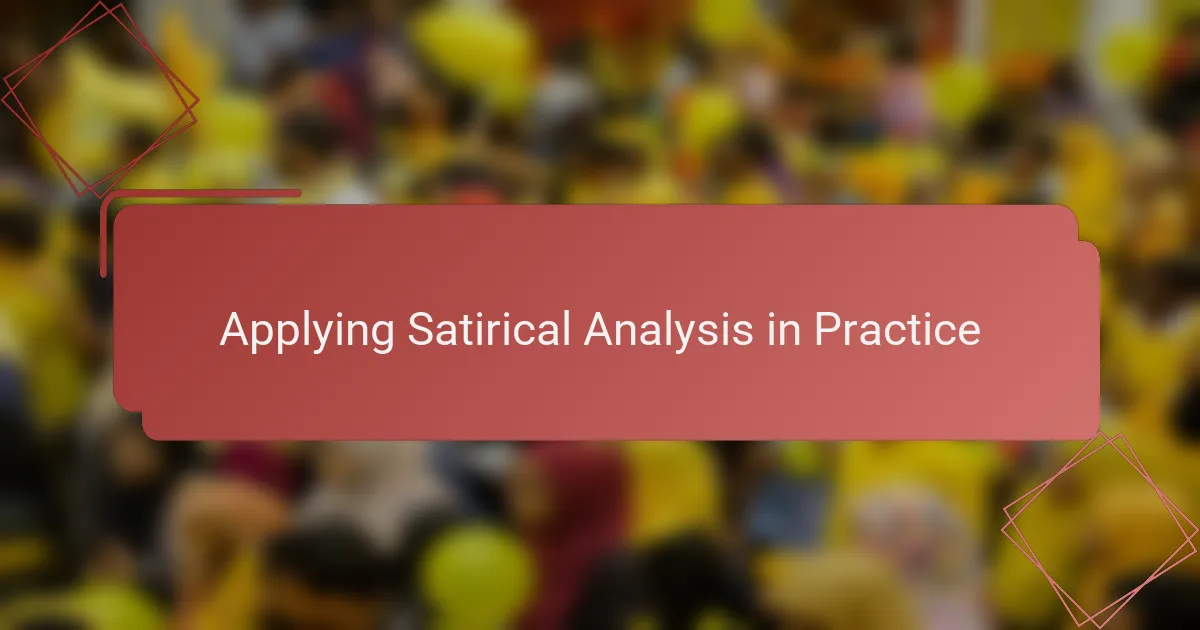
Applying Satirical Analysis in Practice
Applying satirical analysis in practice felt like piecing together a puzzle where every element—tone, context, style—had to align perfectly. I remember dissecting a satirical article and realizing how its rhythmic irony wasn’t just clever wordplay but a deliberate tool crafted to nudge readers toward self-reflection. Have you ever caught yourself rereading a line because it suddenly dropped a truth you hadn’t noticed before? That’s the moment satirical analysis comes alive.
I also found that putting theory into practice meant constantly asking: What is this satire really targeting, and how does it achieve that? Sometimes the exaggeration seemed overblown until I traced it back to an actual policy or public sentiment it lampooned. It was like uncovering the satire’s blueprint—understanding how the humor served as both a shield and a spotlight. This balance struck me as the heart of effective satirical critique.
Working with real examples pushed me to stay curious, especially when faced with ambiguous or layered humor. I often questioned whether the satire’s impact depended on the audience’s background or if the piece carried enough clues to guide any reader toward insight. Navigating those uncertainties made me appreciate how applying satirical analysis is as much an art as it is a method—always inviting deeper exploration rather than tidy conclusions.
